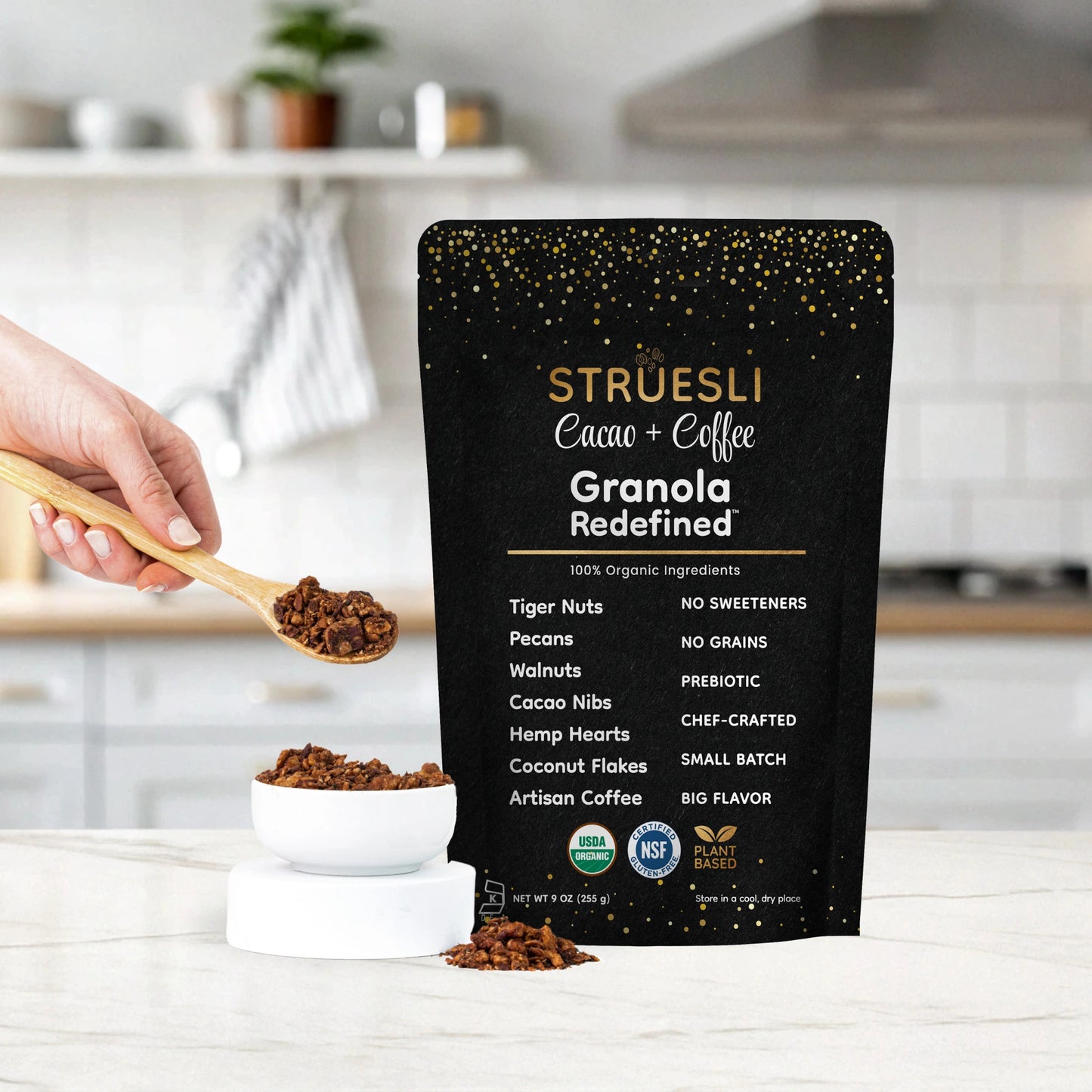
You may have heard of probiotics and all of their wonderful health benefits. But have you heard of prebiotics. They're just as good for you - and in a completely different way. I'll explain the difference between the two, why you need them, and how to get more.
What Are Prebiotics And Why Do You Need Them?
Prebiotics are a type of fiber. Think of it this way: All prebiotics are fiber, but not all fibers are prebiotics.
Prebiotics are high-fiber compounds in many plant-based foods, such as bananas, nuts, whole grains. The fiber serves as food for microogranims that live in your gut (aka the probiotics in your microbiome). As the probiotics help break down the prebiotic fiber in certain foods, the colonies of good bacteria grow stronger and help keep you healthy from the inside out.
Prebiotics vs Probiotics: Understanding The Difference
Probiotics are teeny tiny microorganisms that are in you and in some foods you eat. That's right: probiotics are alive and are already inside of your body. These microorganisms are good-for-you bacteria and yeast. They are part of something I referenced above call your microbiome, which has many functions, including to help keep you healthy from infection and digestive problems.
Research shows that having a healthy microbiome with plenty of probiotic "good" bacteria can also have a positive impact on your mental health, cardiovascular health, oral health, upper respiratory tract health, and skin health. To help increase the good bacteria, many people regularly eat probiotic-containing foods and take probiotic supplements. Some probiotic foods are most yogurts and other fermented foods, such as kefir, kombucha, sauerkraut, pickles, miso, tempeh, kimchi, sourdough bread, and some cheeses.
Think of prebiotics as "pre" (or ahead of) the probiotics. Prebiotics feed the probotics, which helps your microbiome thrive. So while they are different, both compounds work together to promote a healthy gut, build immunity, and improve digestion. You need both of them.
Top Benefits Of Eat Prebiotic-Rich Foods Like Struesli
Eating prebiotic-containing foods on a consistent basis offers many health benefits, including:
- decreasing inflammation
- aiding digestion and metabolism
- increasing calcium absorption
- helping regulate blood sugars
- reducing appetite and cravings
The Foods High In Prebiotics
Most high-fiber plant-based foods are a good source of prebiotics. Some of the highest prebiotic foods are:
- chicory root
- dandelion greens
- legumes, beans, and peas
- garlic, onions, and leeks
- Jerusalem artichokes
- asparagus
- berries, bananas, and apples
- barley, oats, and wheat brans
- flax seeds and chia seeds
- jicama
- cacao
Struesli Granola is also an excellent source of prebiotics. Every 1/4-cup serving of Struesli contains 5 grams of prebiotic fiber! In fact, since Struesli is made from so many fiber-rich plant-based foods, nearly every ingredient in Struesli contributes to the prebiotic amount. The prebiotics in Struesli come from the thinly sliced tigers nuts, pecans, hemp hearts, chia seeds, flax seeds, and the shredded coconut.
An Easy Trick To Get More Prebiotics And Probiotics
One of the simplest ways to get both probiotics and prebiotics at the same time? Start your day with a favorite yogurt and top it with Struesli - voila! - you're giving your gut and microbiome a healthy boost in the most delicious and easy way possible.
Check out these recipes that combine yogurt (probiotics) + Struesli (prebiotics):
- Savory Yogurt Bowls
- Struesli Parfaits
- Layered Chia Puddings
- Labneh and Beets
- Gluten-Free Granola Cups
- Chocolate Banana Bites
- Protein Yogurt Bowl
Written by Jessie Shafer, RDN, a registered dietitian and nutrition consultant for Struesli. Jessie is a former magazine editor and long-time journalist who loves to turn the science of nutrition into relatable tips that can inspire and improve health from the inside out. Updated October 22, 2025




